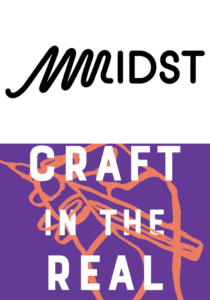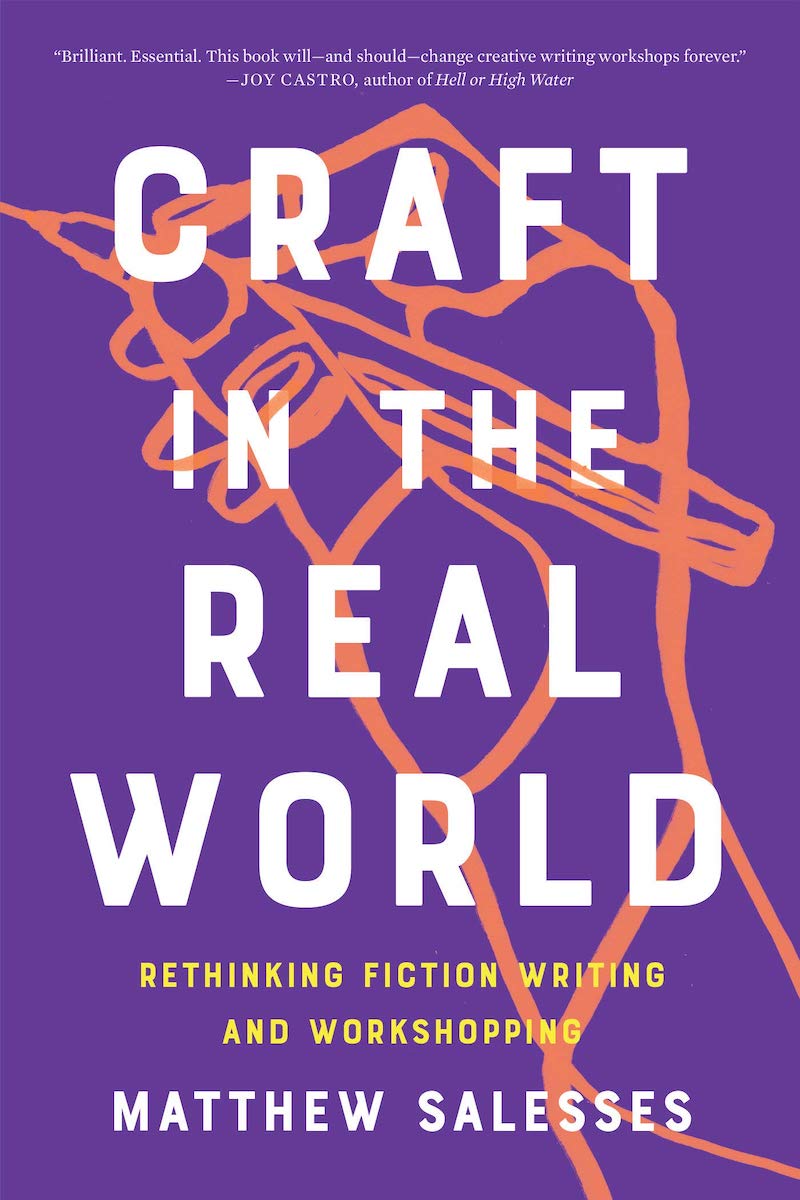
Writers are obsessed with seeing other writers at work: the interviews of the Paris Review; the canonization of daily routines (Ursula K. Le Guin: “5:30 a.m.—wake up and lie there and think”); that black-and-white photo of Stephen King, feet on desk, his corgi perky-eared below his legs as if to spill his secrets. By replicating their routines, we believe we can drag our pens in their grooves. But the focus on the exterior often obscures the real routine, the addition and deletion of words on the page.
A new online poetry journal, founded and directed by Annelyse Gelman, shines a light on this intimate process. Midst, launched this month, lets the reader sit in the space of the writer, bathed in the light of a computer screen as letters appear and disappear. After viewing a final draft, the reader can play a video of a poem being created in real time, slow time, or—my favorite—accelerated time, compressing the creative process to a court stenographer’s flurry. The only thing missing from the virtual reality is the sensation of fingertips on keys.
The result is the elevation of process over product. That process is as variable as the poems themselves; some unleash intact streams of prose (Jose Hernandez Diaz, “The Dahlias in Autumn”) while others expand and explode phrases with blank space (Imani Elizabeth Jackson, “And went to plant”). Instead of presenting each poem as a predetermined, immobile object, Midst celebrates movement and multiplicity.
Among the poems that shift substantially from initial draft to published version is “Ownership,” Gabrielle Bates’s elegy in couplets. In the final poem, timestamped at 6:01 a.m. on February 1, Bates opens:
Yes, I have trouble dwelling in what’s mine.
No, I did not suspect his pain.Bent close, alone, I described the bone
I found—its row of flat, herbivore’s teeth—
Lines polished as bone implicate the reader as an interrogator through their “Yes” and “No. This is accurate to the dynamic between the reader and poet in the poetry world at large: the reader pokes and prods at the poet (often elided with the speaker) to confess her meaning. At public readings, the poet is sometimes expected to preface her piece with a statement about what it’s really about. Perhaps this is because much of making poetry is about stripping: without the padding, meaning has more space to move. Bates’s initial draft, timestamped 6:02 p.m. on November 29, narrows the field of meaning while leaving the reader more morally free, not accused as an accessory to the speaker’s confession:
The only part that belongs to me is how I responded:
walking alone away from one bluff towards another,
through bramble adorned with spider silk, early
autumn patches of a torn veil tossed. I found
a jawbone on the moss, absorbing green
on the earth-flush side, flat herbivore’s teeth.
The scene is the same—a lone speaker finding “flat herbivore’s teeth”—but the relationship between the speaker and reader is not apparent, obscured by details about the natural environment. After completing each draft, Bates copies the text and begins again at the top of the page, preserving earlier drafts below like layers of geological sediment. The most exciting part of the video comes at 12:54 a.m. on November 30, when the single text block erupts into couplets: the bare lines become easier to see, like the “jawbone on the moss, / absorbing green on the earth-flush side.” It is also at this point that the poem is crowned with a working title, “On Ownership,” pushing it further along in its journey.
To watch a writer’s process so minutely feels invasive in the same way as the lyric itself, revealing emotion hidden elsewhere behind the neat march of prose. That intimacy hypnotizes: as words shift on the page, they appear (to quote Bates’s final draft) “strange, then familiar, then / even stranger…” The poet of the past becomes present as words appear on screen, a séance with a ouija board. In a séance, participants (or spirits, depending on one’s beliefs) move a planchette to spell a message; the creepiness owes itself not to the message, but to the idea a spirit is present.
Calling on spirits is a communal act, multiple hands on the planchette. Midst invites readers to nominate contributors like write-in candidates on a ballot. This democratization motivates another recent publication, author Matthew Salesses’s treatise on fiction, Craft in the Real World: Rethinking Fiction Writing and Workshopping (Catapult, January 2021). Salesses’s mission is to open up writing and its incubator, the workshop, created by and for white men among the Iowan cornfields to advance an American agenda during the Cold War. The aesthetic was bare prose à la Raymond Carver, cleansed of the subjectivity and ornamentation of non-Western thought. “Instead of a political argument, a character might angrily eat a potato,” writes Salesses. “This is supposed to leave conclusions up to readers, though what it really means is that the ideology of craft is to hide its ideology.”
Today, that Cold War mindset continues to dominate at tables where peers critique the work of a silent (or silenced) author. This approach—more concerned with product than process—replicates the marginalization of populations in the real world:
For more privileged writers, their decentering in workshop is countered by their centering in the rest of the world. A cis able white male who leaves workshop feeling disempowered usually finds the rest of his American life more than willing to empower him again. Someone less privileged leaves a disempowering workshop and faces the same disempowerment on a larger scale: though they should be in charge of their story, they are again made to listen to other people telling them what their story is or should be. The result is exactly the opposite of finding their voice—the real-world silencing simply reinforces the idea that the marginalized writer should be writing toward the workshop and power.
As remedy, Salesses suggests other workshop methodologies, including sketching the shape of a story, creating Venn diagrams, and staging a mock defense by someone other than the author. The workshop should be tailored not only to the student but to the story—encouraging difference, rather than enforcing sameness: “A workshop should not participate in the binding but in freeing the writer from the culturally regulated boundaries of what it is possible to say and how it is possible to say it.”
Salesses also redefines the elements of craft. Setting, traditionally seen as the environment of the story, is reframed as an expression of the protagonist’s or narrator’s subjectivity—what they notice because they live in a gendered, racialized, or otherwise differentiated body. Another trademark of accepted American narrative, agency—the idea that an individual has free will—is shrunk down to just one of numerous potential drivers of story. The alternative is external causation, the tradition of writers like Kafka whose protagonists have things done to, rather than by, them.
These renegotiations of the workshop and the goals of writing itself—to strive for multiplicity, not a mold—fit neatly alongside the project of Midst. Instead of filtering work at an editors’ table, Midst brings the reader directly to the writer’s desk. Exposing a poem’s permutations celebrates the singularity of the individual poet as well as the many versions of the poet at each time stamp. The result, as with Salesses’s reimagined workshop and ideas about craft, is freedom from the ghosts of writers past.






